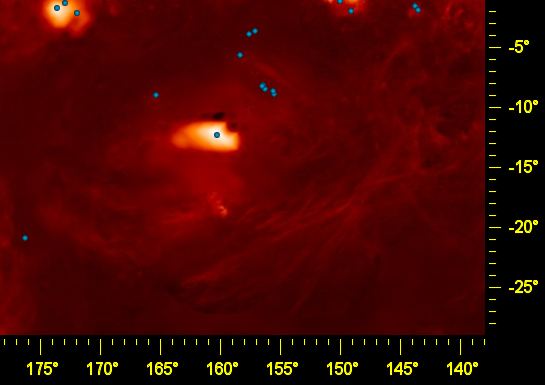
Hover your mouse over each blue dot for the name of the object, or click on the dot for a detail page. This map was created using the all-sky hydrogen-alpha map produced by Douglas Finkbeiner from data collected by the WHAM, VTSS and SHASSA hydrogen-alpha surveys.
The California nebula (Sh 2-220) is ionised by the O7 class runaway star Xi Persei at about 400 parsecs, which glows inside a cavity surrounded by dust clouds. The appearance of the complex dust filaments around and permeating this region is almost anatomical - as though we were surgeons looking inside a human body. Xi Persei was blasted out of the core of the Perseus OB2 association about 1.4 million years ago.
The bright spot at about latitude -18°, below the California nebula, is the HII region LBN 749 (apparently also called the Perseus nebula), which appears to be ionised by the B0-09.5V star HD 278942 and is near the young star cluster IC 348, which has more than 300 known members at about 320 parsecs.
All of the objects mentioned above are part of the Perseus OB2 association which has a core located at a distance of about 300 parsecs.
